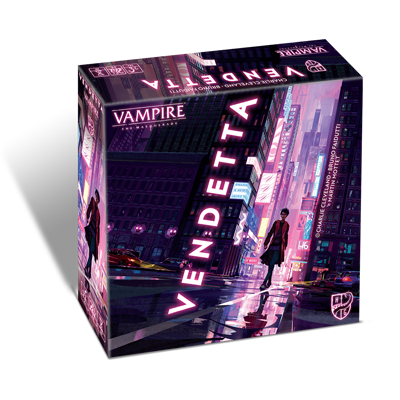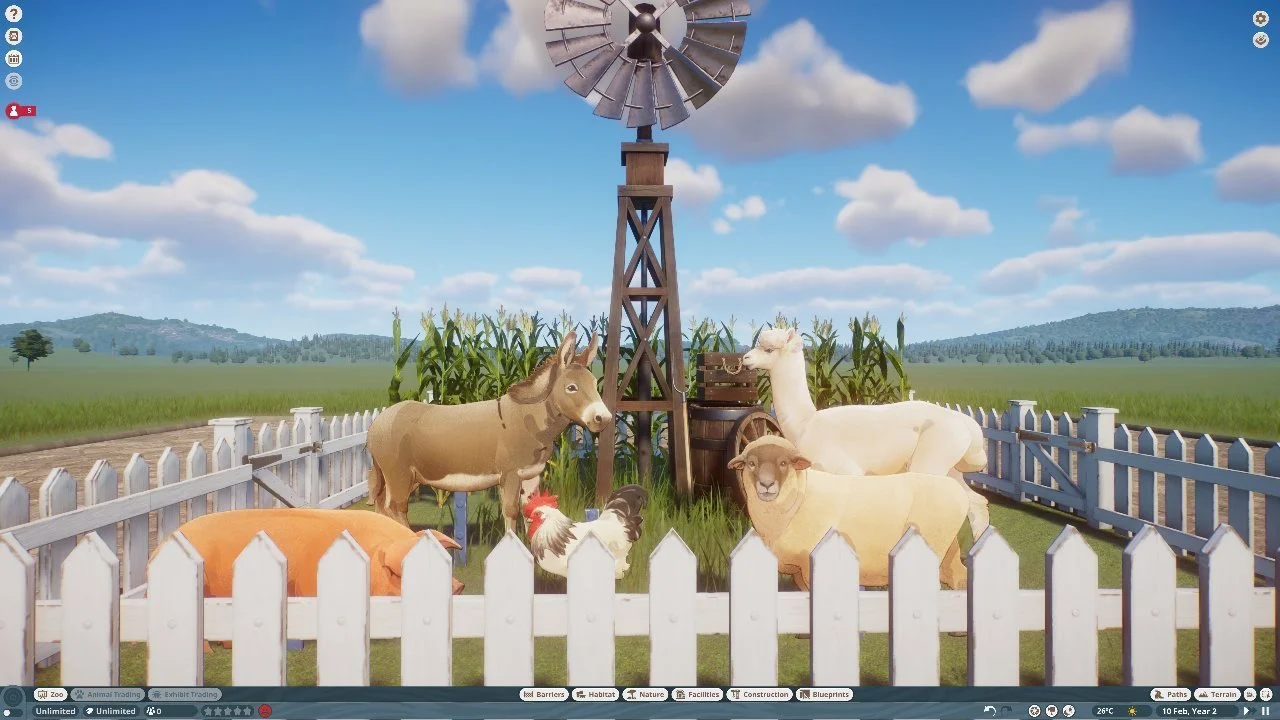Board games on Kickstarter are getting more and more ridiculous. The production value of certain releases is just through the roof, and while they’re shiny to look at and play with, it doesn’t always translate into memorable and lasting gameplay. You can dress it up however you want but if the mechanics aren’t solid and the design (art, graphics, gameplay) isn’t properly tuned, then it’s just an expensive box of plastic and cardboard.
This is why I was initially apprehensive about Dwellings of Eldervale, one of the newest games from designer Luke Laurie and publisher Breaking Games. Big boxes take up a lot of space on my shelves so they have to earn their place.
But I’m never really going to turn down the opportunity to review a board game, so naturally, I gave it a shot.
Also, it’s a worker-placement game, so that was enough to get me interested. Set in a fantasy world, it uses a blend of worker placement, area control, and engine building to create a sense of growth and expansion for any of the sixteen different factions that the players can control. It’s a game of elemental magic, frequent battle, and ultimate triumph.
And I’m so glad I partook in the adventure. This hybrid Kickstarter tabletop game is excellent—in so many ways. Let’s see why.
STORY
Review copy provided by Breaking Games
Giant crocodiles. Killer storms. Flame-wielding demons. And other malevolent entities. Unfortunately, those aren’t even the main trouble in the world of Eldervale.
The bigger issue is the other people who want to take over the land before you do. Sixteen different factions make up the collective people of Eldervale and they aren’t interested in sharing. If you want to dwell in the land and control the space, you’ll have to push against these intrusive peoples and keep them at bay while you grow in power and reach. Assemble your workers, send out your fighters, and start building your dwellings. Use whatever magic and resources you have at your disposal to get the job done.
Dwellings of Eldervale is not a story-driven game. It’s not a narrative event, but you will have fond memories of the experience. When the lone unit takes down a monster. When you pull off the perfect chain of unit placement and tableau-card actions. When you dance around the Ghosts of Eldervale and beat those tricksy apparitions. When you find the best combo of faction abilities and magic cards. It all crystallizes into this wonderful tabletop moment that makes you want to revisit Dwellings again and again.
It creates stories just as well as other games present them.
GAMEPLAY
Dwellings of Eldervale has a lot going on but it’s never overwhelming. And the Game Trayz inserts really assist in bringing this game in and out of the box in a way that all games should consider.
The sixteen factions are divided into eight elemental groups—two factions per element. Each faction is part of a double-sided player board that acts as a lid for its components tray. Inside that tray are the necessary workers, dice, and player markers needed to start the game. In that same tray are places for your resources. Both the resource and worker inserts tell you the resource max and cost, respectively. The board/lid is where you place your readied units. The scoreboard tracks points, elemental power, as well as combat and orb rewards. The resource inserts also act as deck and discard locations for the magic card deck. And everything else in the game tucks away into the other storage solutions.
Now, I normally don’t start an exploration of gameplay with a look at the storage in a game, but Dwellings of Eldervale does such a good job of making everything tie together. The Game Trayz inserts control all of the chaos of this big-box game, but they are also central to how it plays—effectively and beautifully.
It’s a perfect example of how careful design and attention to detail can transform something that would otherwise be a good game into a fantastic one. That’s what Dwellings has achieved.
To just look at what you’ll be doing in the game, we must dive past the gorgeous surface and descend into the depths of worker-placement, area control, tableau cards, and the hybrid synergy of Ameritrash and Eurogames.
Players take turns either placing workers or retrieving all of their units from the board. Placing workers will guarantee a certain action on a certain hex tile—and it might instigate a battle. Retrieving workers brings them back to the Ready Area on your player board but also enables you to perform actions on your collected Tableau and Adventure cards. These two types of turns make up the core of Dwellings and will continue until one of two endgame criteria triggers—either a player’s sixth Dwelling is constructed or the final Realm tile is placed on the board. After that, one final turn takes place before endgame scoring.
Placing workers will occur with two types of Realm tiles. Elemental realms that possess resources, dormant elemental power, and maybe even a Boss and its Lair. And Ruin tiles, which grant specific actions to the players that activate them. It’s up to the player to find the right rhythm of placing workers and regrouping them.
There is limited space in Eldervale, though. Not everyone can stake a claim to the land. So battles will certainly unfold, which entails the activated space where two different factions (as well as any Monster who Rushes) and any adjacent space with a unit that wants to enter the fray. You can have a battle between two factions. Or you can have a battle between four factions and a Boss. It just depends on the layout of the hex tiles and the decisions of the players.
What’s nice about combat, though, is that it never feels unfair or devastating. It’s just part of the game. Players who lose send their units to the Underworld, but they also gain Sword pieces for each unit sent there. So it makes them stronger the next time they fight. And some factions have abilities tied to the Underworld. And some quests reward you for losing. And other things happen which make this not such a big deal.
Combat is always present. But it’s not debilitating in the way that some other games end up feeling.
In addition to the main cycle of placing units, engaging in combat, and regrouping, Dwellings of Eldervale also introduces Magic Cards, which consist of spells that affect in-game events, quests that grant victory points upon completion, and prophecies that give endgame bonuses when their requirements are met. These influence the game in nuanced ways that help to vary the gameplay.
Scoring, however, depends on how well you’ve coordinated your elemental power, your dwellings, and your adventure cards. The stronger you are in an element, the more it will increase your scoring for both dwellings and adventure cards. Finding a level of synergy between your moves is important. Yes, you can luck your way into it, but you can definitely improve your chances of winning if you're aiming for the right realm tiles, the right cards, and the right battles. Neither of my factions went past 100 points in the first game, but the next two games after that leapt up past that scoring marker, with one faction scoring more than 150 points.
There is room for growth and depth of strategy that makes me look forward to playing this again and again.
I’m stoked that Dwellings of Eldervale is in my collection and I can’t wait to play it with friends. It’s going to be that new shiny toy that I want to parade in front of people when they come over.
VISUALS
You can put a rooftop on a meeple. Did you read that right? You can put a ROOF on a MEEPLE! That’s so awesome. It may be my favorite visual part of this game. It’s such a clever little design choice. I really feel the need to highlight it. Maybe the visual discussion of this game is over. Do we really need to talk about anything else?
Fine…
We can talk about other stuff. And I’m happy to do so because this is one area where Dwellings of Eldervale crushes the competition. You don’t have to have the Deluxe or Legendary Editions of the game to appreciate what the designers, artists, editors, and publishers have done here.
The Game Trayz inserts are exceptional. They really organize this experience in an essential manner. I wouldn’t want it any other way than how it is—except for maybe a design where the player boards don’t mash their cardboard on the small notches that keep the “lids” in place.
The colors of the faction pieces and the Realm tiles are all easily distinguishable, even for this hue-challenged fellow.
The rulebook is concise, clear, and well-written. I didn’t have very many rule questions during my playthroughs (and the ones I did have were small and immaterial).
The art and the iconography don’t clash at all and the symbols used throughout the game make it very intuitive and functional once you know the rules of the game.
All of these disparate pieces really flow together in Dwellings, making for a satisfying tabletop experience that enriches the gameplay and encourages players to come back for second and third helpings. I really like what’s been done—including the cardboard inserts that take up space where Deluxe and Legendary miniatures would have been. It’s a small touch but it really shows that this team cares about what they’re doing.
REPLAYABILITY
Beyond the high number of playable factions and the variable element in hex-laying tile games, Luke Laurie and the development team for Dwellings have included a host of other gameplay tweaks that can keep you engaged for hours on end.
Additional Ruin hexes, like the Oracle, the Dragon’s Den, and the Bifrost all lend an air of mystery and surprise to what is an already fluid and mercurial game. Mercenaries offer additional combat solutions to players other than their base units and dominated monsters. These can be purchases temporarily or added permanently depending on your strategy.
Game variants also offer complexity, flexibility, and freedom to players. A 2v2 mode creates some interesting possibilities where players will be able to combine the faction abilities and tactics of two different players into one forceful push against another duo. And probably my favorite iterations are the options of drafting magic cards at the beginning of the game and tactics tokens that influence combat and its effect on the hex-tile map. These don’t alter the game drastically but they give players the freedom to construct their own best version of Dwellings of Eldervale.
The design of the game already does so much to encourage replayability, but the designers didn’t stop there. They went on to create even more options for players and I am really grateful for that intentional effort on the part of the development team.
WHAT IT COULD HAVE DONE BETTER
Most of my quibbles are small ones.
I wish the cardboard lids didn’t get bruised by the Game Trayz inserts.
I’m torn about the box. I wish the standard version was smaller so that it didn’t take up so much space, but I also appreciate the fact that the box is big enough so that players who want to add the miniatures and other luxury components later can do so.
And… that’s about it?
The main thing I’ll have to wait and see about is scaling with higher player counts. When I’m able to get a four- or five-player game in, then we’ll see if it runs as smoothly. I suspect it will, but I can’t say just yet.
A big compliment to Dwellings of Eldervale is that I was confident before I opened up the box that I wouldn’t be swindled and charmed by a big-box Kickstarter. And that fell apart pretty quickly. They’ve done so much right and I really don’t have anything to complain about. It’s not a perfect game. But it’s pretty darn close for my personal tastes.
The only reservation some might have is the price. This standard version retails at $100. That’s the cheapest one. The other ones climb up to $200. To me, this game is still worth it at that price point, but other gamers might balk. I did recently spend $250 on a discounted Crokinole board, though, so I guess it’s a matter of perspective. If you’re at all worried about the high cost of Dwellings of Eldervale, then I would try to find someone who has it first and play to see how you like it.
Otherwise, bravo Luke Laurie, Peter Vaughan, Breaking Games, and everyone else who worked hard on this beauty.
VERDICT
As a reviewer, there is almost always a game on the table (or nearby) waiting to be played and next in the rotation. Even if the game you just finished is a good one, you must pack it up and get it on the shelf so you can move on.
I didn’t want to do that with Dwellings of Eldervale. It stayed on my table for several days. I played it once. I played it again. I mused over the components, and the gameplay, and the variants I hadn’t check out. I even sat down and dug into the solo mode, which is something I’m normally hesitant to do.
That’s the hallmark of a great game, for me. Something that I don’t want to put down. Something that lingers in my mind long after I’ve finished playing. A superlative game is one that you don’t mind losing because the experience is still worth it. And I don’t even have the deluxe or legendary versions of the game. This is the entry-level edition. Don’t get me wrong: now that I’ve played, I definitely want those other components, minis, and gameplay options. But you don’t have to have them. This is an awesome tabletop experience without those.
I was certainly not expecting a game like this from Breaking Games. The last review I did for the publisher was a humorous card game focused on bird parody and set collection. This is a board game monstrosity in all the best ways.
Everything has come together for Luke Laurie and his big-box baby. Dwellings of Eldervale has an intuitive setup, nigh unparalleled storage solutions, engrossing gameplay, and sky-high replay value between the additional hex tiles, game variants, and sixteen semi-asymmetric factions. It’s really something. And I could easily see my personal score for this game improving in the future.
I’m very pleased and can’t wait to get it to the table again. It’s worth your time and your money, no matter the pledge level or retail cost.


























